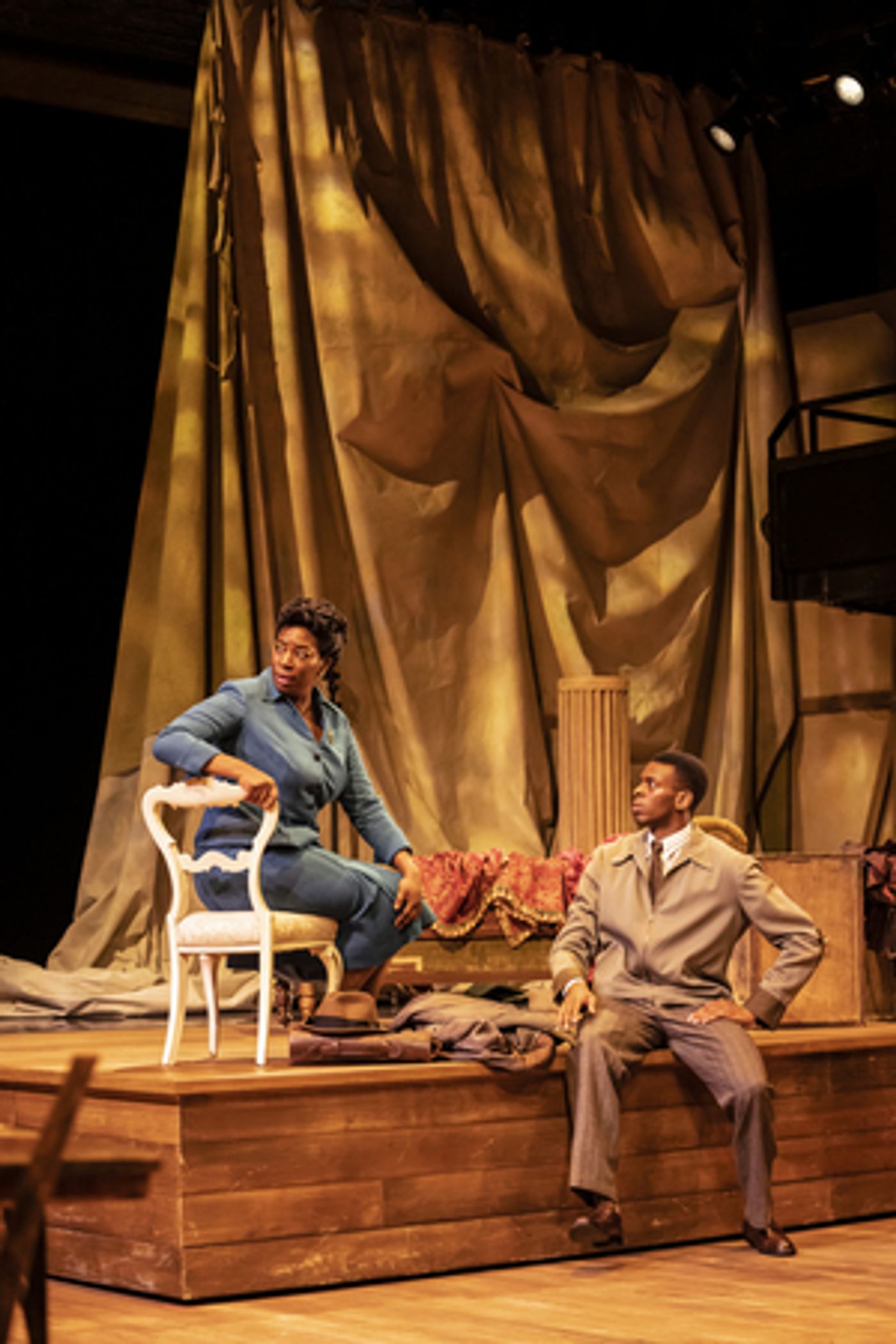Review: TROUBLE IN MIND, National Theatre
Alice Childress's neglected play about racism in showbiz resonates sharply at the National Theatre.

![]() It's better late than never for a neglected classic to receive a major production. American dramatist Alice Childress's 1955 play Trouble in Mind is one such work with controversial beginnings and belated revivals. If Childress had agreed to revise her play in 1955-57 to make it more palatable for a predominantly white audience, then hers would have been the first play by a Black woman to be produced on Broadway.
It's better late than never for a neglected classic to receive a major production. American dramatist Alice Childress's 1955 play Trouble in Mind is one such work with controversial beginnings and belated revivals. If Childress had agreed to revise her play in 1955-57 to make it more palatable for a predominantly white audience, then hers would have been the first play by a Black woman to be produced on Broadway.
It's a shame, then, that it took 66 years for Trouble in Mind to reach Broadway, having opened at the American Airlines Theater in November of this year, three weeks before The National Theatre has unveiled at the Dorfman its own accomplished staging under the helm of Nancy Medina.
This contemporaneous interest in the play is hardly surprising, as what Childress offers here is a scorching indictment of racism in showbiz - a phenomenon grimly alive and well. While Medina's production preserves the play's mid-century aesthetic, it makes an applaudable effort to amplify its contemporary resonance with subtle touches.
Trouble in Mind portrays a company of actors rehearsing an allegedly progressive Broadway play with an anti-lynch theme, set in a present-day Southern farm. Over the course of three rehearsals, we witness how the cast, consisting of Black and white actors, and led by a white director, react to the assumptions and stereotypes perpetuated by the work at hand.
Childress's focus falls on the Black actress Wiletta, whose usually dismissive attitude towards microaggressions in the rehearsal room strains under the pressure of this covertly racist play and her director's blind take on it. Tanya Moodie's performance in the part engagingly captures both Wiletta's faux happy-go-lucky attitude and her fiery candour about her subsequent epiphanies. She is particularly striking in an emphatic scene where she wearily criticizes the demeaning character parts to which Black actresses remain shackled.
The toxic rehearsal dynamics that increasingly plague Willetta are brought to life by an assured cast. Rory Keenan is pitch-perfect as director Al, whose so-called unorthodox methods entail an obsession with truthful acting, but without any regard for what that truth might mean for his Black cast. For the actor Sheldon, performed with verve by Cyril Nri, the painful truth comes out when he delivers a chilling account of how he witnessed a lynching as a nine-year-old.
Naana Agyei-Ampadu and Daniel Adeosun richly present other Black members of the cast in the room, variously puzzled by its rising tensions, while Emma Canning and John Hollingworth take on white actors who fail to register fully how much of what they are engaged in is rigged against their Black colleagues.
Rajha Shakiry's understated but clever set places us in backstage that doubles as a rehearsal space: an exposed brick wall, a ghost light, a long ladder, and random pieces of furniture evoke the quintessential underbelly of a theatre. Nao Nagai's surprisingly eclectic lighting and Elena Peña's protean sound design reinforce the play's changing trajectory across its three acts.
Medina's direction proves to be at its strongest in the third act, when the climactic confrontation between Willetta and Al is allowed to take place in a world whose contemporary relevance is accentuated both visually and choreographically. Here, subtle changes in Shakiry's set and costume design expand the rhetorical reach of the play, intimating that the exact same interaction could take place during a rehearsal today.
The build-up to this captivating finale would have been stronger if some rhythmic lags in the first two acts were avoided. In particular, those moments when the company are actually rehearsing the play hamper the production's momentum, in that their rapid pace and scattershot quality make them curiously unconvincing. A less cartoonish rendering of what these actors are capable of would have made their ultimate crisis as an ensemble even more powerful.
To encounter this production of Trouble in Mind is to grow aware of the ambition, anger, and prescience that must have galvanized Childress's dramatic imagination in the mid-1950s. It's a play as timely today as it clearly was then, asking questions and pointing fingers that demand to be reckoned with. In these troubled and troubling times, there is much food for thought to be found in this rehearsal room.
Trouble in Mind at The National Theatre until 29 January
Photo credit: Johan Persson
Reader Reviews
Videos

